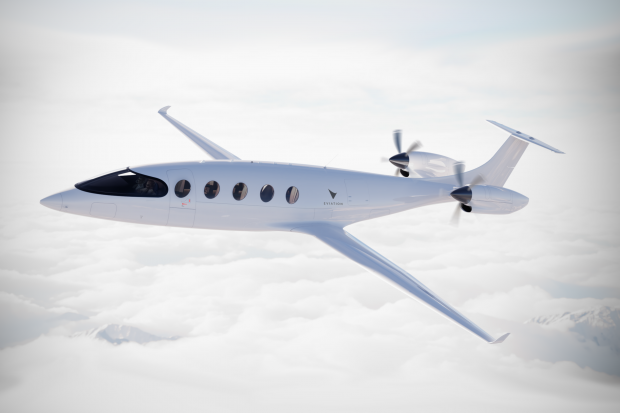
Breaking News
 Mirrored concrete for cheap solar energy
Mirrored concrete for cheap solar energy
 All Government Is Dictatorial Because All Government Is Totalitarian
All Government Is Dictatorial Because All Government Is Totalitarian
 Putin Says He's Ready for Peace
Putin Says He's Ready for Peace
 Medicaid Fraud in Minnesota at least $9 Billion Since 2018
Medicaid Fraud in Minnesota at least $9 Billion Since 2018
Top Tech News
 This tiny dev board is packed with features for ambitious makers
This tiny dev board is packed with features for ambitious makers
 Scientists Discover Gel to Regrow Tooth Enamel
Scientists Discover Gel to Regrow Tooth Enamel
 Vitamin C and Dandelion Root Killing Cancer Cells -- as Former CDC Director Calls for COVID-19...
Vitamin C and Dandelion Root Killing Cancer Cells -- as Former CDC Director Calls for COVID-19...
 Galactic Brain: US firm plans space-based data centers, power grid to challenge China
Galactic Brain: US firm plans space-based data centers, power grid to challenge China
 A microbial cleanup for glyphosate just earned a patent. Here's why that matters
A microbial cleanup for glyphosate just earned a patent. Here's why that matters
 Japan Breaks Internet Speed Record with 5 Million Times Faster Data Transfer
Japan Breaks Internet Speed Record with 5 Million Times Faster Data Transfer
 Advanced Propulsion Resources Part 1 of 2
Advanced Propulsion Resources Part 1 of 2
 PulsarFusion a forward-thinking UK aerospace company, is pushing the boundaries of space travel...
PulsarFusion a forward-thinking UK aerospace company, is pushing the boundaries of space travel...
 Dinky little laser box throws big-screen entertainment from inches away
Dinky little laser box throws big-screen entertainment from inches away
 'World's first' sodium-ion flashlight shines bright even at -40 ºF
'World's first' sodium-ion flashlight shines bright even at -40 ºF
7 Electric Aircraft That Will Shape the Future of Flying

Electric-powered aircraft may seem like a vague, future promise in the pursuit of decarbonizing aviation, but a handful of battery-powered planes are already in flight. These days, it's mostly limited to light, two-seat airplanes often used as trainers, but aviation experts think that by 2050, with expected developments in battery technology, many regional jets and turboprops could be electric.
That's because electric motors driving a propeller or turbine produce an abundance of torque for a short period. But the power draw required to support larger regional aircraft is still too much—and too heavy—with current battery systems. The bigger the battery, the more it weighs, and the higher chance of fire or other issues, so electrifying an aircraft is not as simple as an electric vehicle. Also, jet fuel's greater energy density—estimated to deliver 50 times more power for the same weight and volume as batteries—will be hard to replace in a marketplace that's resistant to change.
Most agree that battery development is key to an electric future. "Our focus areas include faster charging, energy recovery, the integration of new-generation cells, and the adoption of CCS charging commonality to streamline electric flight operations," says Gabriel Massey, president and managing director of Pipistrel, which has pioneered electric two-seat training aircraft.
Electric engine specialist Safran doesn't see battery-powered aircraft entering the mainstream until about 2050. "We'll have to wait for major breakthroughs in terms of battery-energy density and high-voltage power management to have any hope of replacing thermal engines by electrical or hybrid-electric propulsion systems," a spokesperson told Robb Report.
Still, that hasn't stopped some manufacturers like Pipistrel from building light, battery-powered aircraft that are being used around the world. Experimental electric aircraft are also taking flight: Eviation's prototype aircraft Alice flew in September of 2023, while Aura Aero's Integral-E made its first flight on December 3. But it'll be several more decades before you can hop on a regional electric jet, though everyone believes it's coming.
Pipistrel is the pioneer electric plane-maker in the training space. It has leveraged its new association as a subsidiary to Textron, which owns the Cessna and Beechcraft aircraft brands, as a key part of Textron eAviation.
Pipistrel has already delivered more than 100 of its Velis Electro models, both in the U.S. and Europe, where certification came in 2021. Korum Ellis, who founded FlyOnE in Australia, has been flying the electric trainers for four years, to prove that electric aircraft can decarbonize flight training and eventually deliver short-hop regional trips. "We've now flown over 1,800 electric passenger movements, over 1,200 hours of electric training, and nearly 100,000 passenger miles—all electric!" said Ellis.



